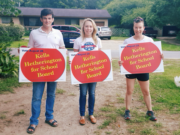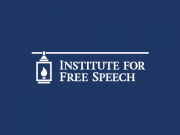The New York Times reporter Nick Confessore was on NPR’s Fresh Air a few days ago and said “You know, the average marketing budget probably for Procter and Gamble on the course of a calendar year, I suspect, rivals all the spending on campaigns in an election year. I’m making that up, but political spending…is about, you know, $6 billion in a presidential, four billion in a midterm election.”
That got my curiosity up, so I looked up the number. It’s $9.2 billion this year, worldwide. Way more than campaign spending, especially when you consider campaign spending is over two years, not one.
On page 52 of P&G’s 10-K, it says: “Advertising costs, charged to expense as incurred, include worldwide television, print, radio, internet and in-store advertising expenses and were $9.2 billion in 2014, $9.6 billion in 2013 and $9.2 billion in 2012.”
P&G doesn’t break out precise sales by country but on page 12 it says: “Net sales in the U.S. account for approximately 35% of total net sales.”
So if their ads were proportional to sales, that might be $3.22 billion in the USA per year, close to the total spent on campaigns. In any event, over the election cycle, P&G spent about $6.5 billion on marketing in the US, over 75% more than all the candidates, PACs, parties, and nonprofit groups did combined for the 2014 federal election campaigns.
The Center for Responsive Politics predicts that total spending in the 2014 election cycle will equal roughly $3.67 billion, a slight increase from the $3.63 billion spent in 2010.
That’s not all that much more than spent on Halloween candy. According to the National Confectioners Association, total spending on Halloween candy was expected to hit $2.5 billion in 2014. I imagine a lot of that will be cleaned up with Crest toothpaste.
Campaign spending was also less than the total value of every ad run during all the playoffs in one year for March Madness basketball, NFL football, NBA basketball, and Major League Baseball.
Campaign spending is good for us. There’s more speech. More information to more voters. And more controversy and information about the election, which leads to higher turnout. And all this information, good and bad, is paid for by mostly civic minded people who simply want better government. What a deal!
Editors note: for more information, check out this article by the Wall Street Journal.














